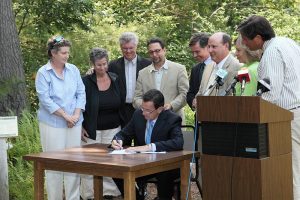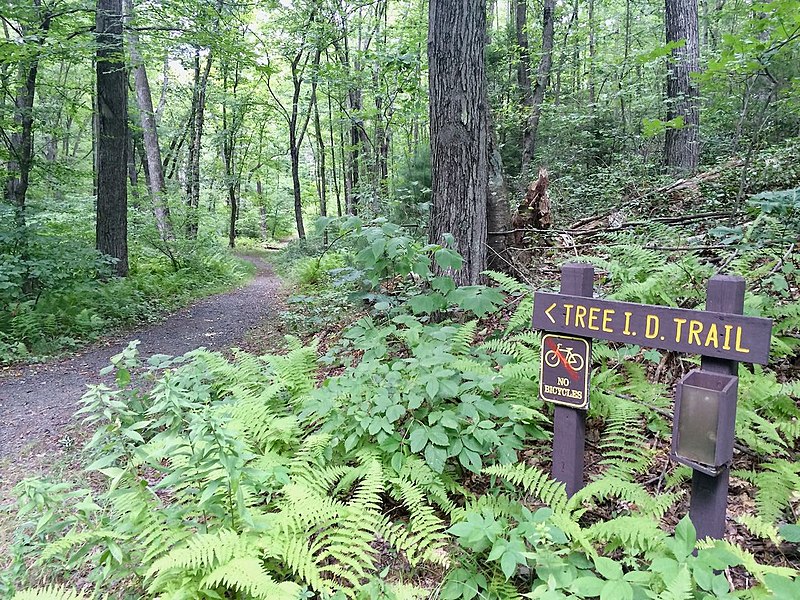By Nancy Finlay
John Humphrey Sessions was born in Burlington, Connecticut, in 1828. His father, Calvin Sessions, moved to Burlington from Vermont in the early 19th century and built the old Sessions house at the foot of Meetinghouse Hill in 1808. Later, John Humphrey Sessions moved to Bristol, where several generations of the family ran J. H. Sessions & Sons, a firm specializing in trunk hardware. The family retained close connections with Burlington, however, where they continued to own property and where several family members still lived.
Although the Sessions family were members of the Methodist Church and attended and supported Prospect Meeting and Mount Hope Chapel in Bristol, William E. Sessions (John Humphrey Sessions’ son) helped the Congregational Church in Burlington acquire a new organ and planned the program for its dedication. The family played a prominent role in Burlington’s Old Homes Days and they opened the family homestead to visitors several times in the early 20th century during these celebrations.
Sessions Woods in the 20th Century

Governor Malloy at Sessions Woods signing Public Act 12-152, An Act Concerning the State’s Open Space Plan – Connecticut State Library
In 1957, the Sessions family sold a large tract of land in Burlington to the New York Conference of the Methodist Church. The property consisted of wooded hills and valleys with small ponds and streams running through it. It was named Sessions Woods and for many years was home to a summer camp for children. Eight secluded campsites featured accommodations in covered wagons, teepees, and hogans—each contained a fireplace, water, and a dining area. The goal was to provide boys and girls with a basic camping experience, to teach them self-reliance, and to encourage them to engage in outdoor activities. Campers came for one or two weeks during summer vacation, between June and Labor Day. Religious retreats and cross-country skiers also used the property in the winter, and the Tunxis Trail—which cut through the property—was popular with hikers.
By 1980, the New York Conference decided they could no longer afford to operate a camp in Connecticut and they announced plans to sell the land to a local real estate developer. According to the Hartford Courant, Burlington was the fastest growing town in Connecticut in the 1980s. People were moving out of the cities to the suburbs and rural areas—small towns such as Burlington proved especially attractive to those seeking to escape urban life. Plans called for 190 houses to be built on a portion of the Sessions Woods property, the remainder to be kept as a private nature preserve. Although the State Department of Energy and Environmental Protection (DEEP) wanted to acquire the site, they were only prepared to offer half as much money as the private developer.
Just when it looked like the sale was about to go through, local residents—dedicated to saving the site from development—formed the Friends of Sessions Woods. Over three hundred residents and property owners signed a petition opposing the sale. They argued that the land was a valuable natural resource, that more than half of it was wetlands, and that it could not accommodate the septic systems of 190 houses. The debate raged for over a year, but eventually the New York Conference decided to sell the property to the State of Connecticut. The camp opened for the last time in 1981 before the Conference sold the covered wagons and other equipment at auction.
Sessions Woods Protected Today
DEEP wanted to leave the site essentially as it was and use it as an environmental education center—for land owners to learn how to improve natural habitat and attract wildlife to their property. Exhibits showed how animals and birds utilize dead and fallen trees and old stone walls as shelter and demonstrated how to guard against the depredations of deer and incursions by beavers. The Friends of Sessions Woods remain actively engaged to this day, sponsoring walks, workshops, and other activities. While the woodlands are protected and preserved, they are actively managed; DEEP clear cuts areas from time to time to provide habitat for species requiring open space. In 2004, Sessions Woods acquired a large additional tract of land from the New Britain Water Department, almost doubling the size of the protected area. Today, Sessions Woods Wildlife Management Area is home to deer, beaver, river otter, great horned owls, barred owls, and a host of songbirds. Black bears are occasional visitors and wood ducks and mallards frequent the beaver pond. Local residents and visitors from all over Connecticut come to walk the trails and enjoy the nature programs.
Nancy Finlay grew up in Manchester, Connecticut. She has a BA from Smith College and an MFA and PhD from Princeton University. From 1998 to 2015, she was Curator of Graphics at the Connecticut Historical Society.









